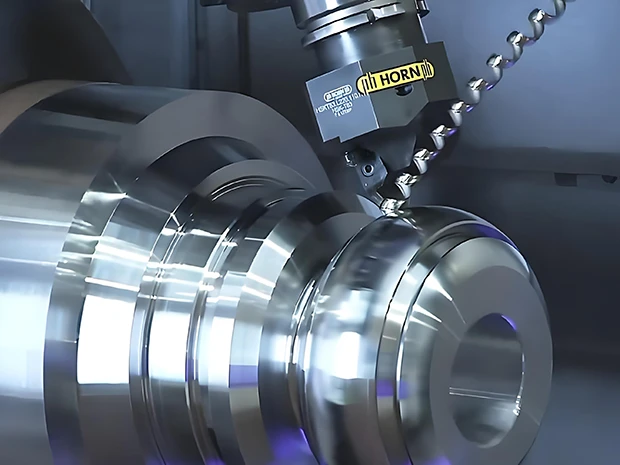CNC aluminum parts processing
Our complete aluminum alloy CNC processing capabilities provide full services for your aluminum processing projects from prototype processing to batch processing of final aluminum parts.
One-time CNC aluminum parts processing prototype




We support 24/7 processing and manufacturing
As lightweight metals are widely used, CNC aluminum parts processing is becoming the choice of many industries. With our extensive processing capabilities and experience, Aluminum alloy CNC processing has been our area of expertise for many years.
We focus on manufacturing non-standard precision aluminum parts with complex structures, Committed to delivering highly accurate and consistent parts to customers. We continually invest in new equipment and skilled employees to ensure our team maintains a strong competitive advantage, We have also been improving our aluminum processing processes to improve efficiency and quality, And continue to meet customers’ production needs.
CNC machining typically uses advanced CNC machine tools. These machine tools use computer control systems to precisely control the movement trajectories and processing parameters of the cutting tools. When processing aluminum parts, Common machine tool types include machining centers, CNC milling machines and CNC lathes, etc.
Machining centers have multiple axes, Can perform complex three-dimensional processing operations. It can automatically change tools, Achieve a variety of processing techniques, such as milling, הִתעַמְלוּת, Boring, Tapping etc.,CNC milling machines are mainly used for milling of flat and curved surfaces, CNC lathes are suitable for processing cylindrical aluminum parts.
1. Design and programming
– first, According to the design requirements of aluminum parts, Create 3D models using computer-aided design (CAD) software. Then, Convert design models into machining programs that can be recognized by machine tools through computer-aided manufacturing (CAM) software. This program contains tool paths, Cutting parameters, Feed speed and other information.
2. Material preparation
– Choose the right aluminum material, Commonly seen are aluminum alloy plates, Rod, Profiles, וכו', Cut according to processing requirements, blanking, Prepare rough parts.
3. Machine tool processing
– Fix the blank on the machine table, Execute the machining program through the machine tool’s control system. The tool cuts the aluminum parts according to the predetermined path, Gradually remove excess material, Form into desired shape and size.
4. Quality inspection
– After processing is completed, Quality inspection of aluminum parts. Commonly used detection methods include three-coordinate measuring instrument, Measuring tools, וכו', To ensure the dimensional accuracy of aluminum parts, Surface quality and geometry meet design requirements.
CNC aluminum parts processing is widely used in various industries, such as aerospace, automobile manufacturing, electronic equipment, Medical equipment, וכו', in the aerospace field, The lightweight and high-strength properties of aluminum parts make it an important structural material, CNC machining enables high-precision aircraft parts and spacecraft assemblies. in automobile manufacturing, Aluminum parts for engine components, Body structure, וכו', CNC machining ensures part quality and reliability, The electronic equipment and medical device industries have high requirements for parts accuracy and surface quality. CNC aluminum machining can also meet these needs.
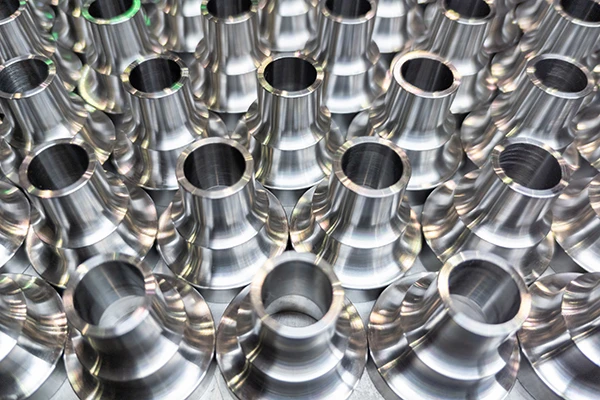
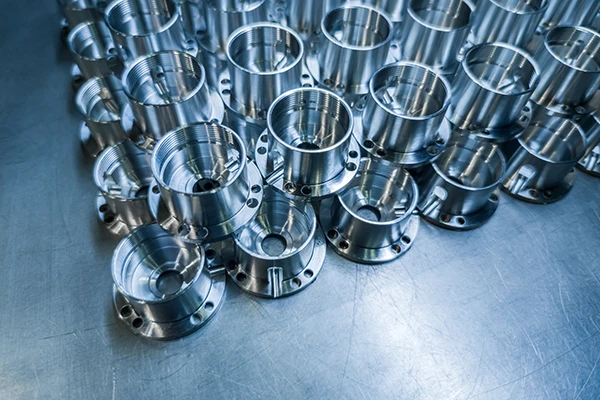
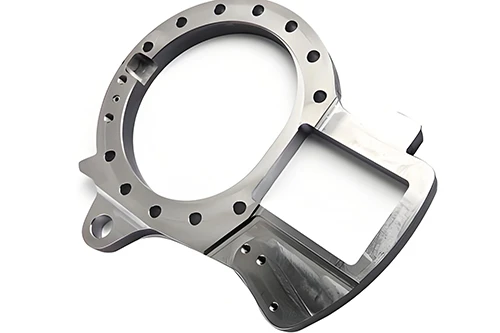
Aluminum alloy 6061
The most versatile heat-treated aluminum alloy, While retaining most of the high-quality properties of aluminum. This grade offers a wide range of mechanical properties and corrosion resistance, Easy to anodize, Good processability and weldability, It can be manufactured by most common processes, Especially CNC machining.

Aluminum alloy 6082
Aluminum 6082 is a medium strength alloy, Excellent corrosion resistance. It has the highest strength among the 6000 series alloys. 6082known as structural alloys, 6082Plate is the alloy most commonly used for machining. As a relatively new alloy, The higher strength aluminum 6082 has replaced 6061 in many applications.
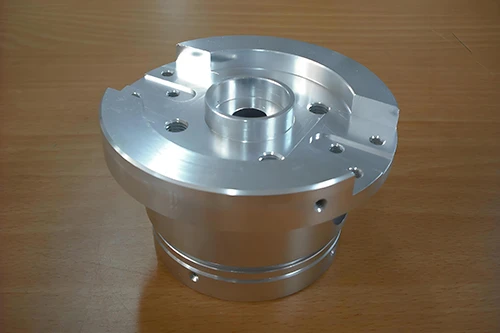
Aluminum alloy 6063
Commonly known as construction alloy, It has quite high tensile properties, Excellent processing properties and high corrosion resistance, Most commonly found in a variety of interior and exterior architectural applications and decorations. 6063It is a representative alloy for extrusion, Lower strength than 6061, Good extrudability, Can be used to form materials with complex cross-section shapes.

Aluminum alloy 7075
This is one of the strongest aluminum alloys available,It has an excellent strength-to-weight ratio, Ideal for use on highly stressed parts, is one of the extremely expensive alloys available. But this grade is not easy to weld, Poor corrosion resistance. 7075Aluminum is a typical material used in the aviation industry, With complex structure and high precision.
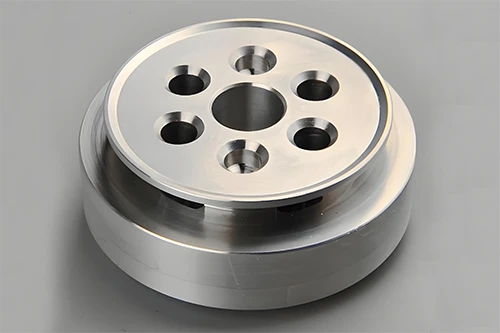
Aluminum alloy 2024
Aluminum 2024 is used in applications requiring a high strength to weight ratio as well as good fatigue resistance. It is not solderable, and has average processability. 2024Poor corrosion resistance, Not very suitable for anodizing.
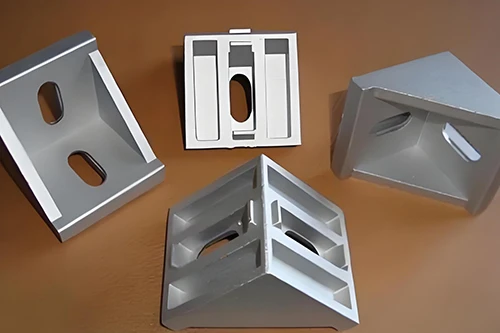
Aluminum alloy 5052
This is the highest strength alloy available in non-heat treatable grades, Corrosion resistance, Good weldability and formability, Its fatigue strength is higher than most other aluminum grades. It has good resistance to marine atmosphere and salt water corrosion, and has excellent processability.




To give you a true appreciation of our CNC aluminum parts processing standards, Here are some examples of our past processing, and sample aluminum parts crafted by senior technicians. Our team has demonstrated exceptional expertise in all types of CNC aluminum parts processing. כָּך, If you are looking for a reliable aluminum processing company for your project, Then you don’t have to look any further!
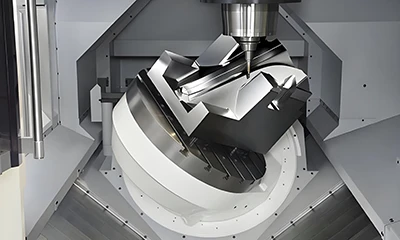
Common ways to eliminate internal stress are to use natural or artificial aging and vibration treatment。שֵׁנִית, Pre-machining of workpieces excess material, Natural aging for 1-2 hours before processing and shaping, It can also eliminate deformation caused by internal stress.
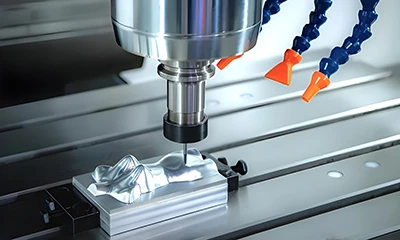
Milling of thin-walled aluminum parts with poor rigidity, The following clamping methods can be used to improve processing accuracy: Use vacuum suction cups to clamp workpieces for evenly distributed clamping force; Use the method of filling media inside the workpiece to improve the rigidity of the workpiece.
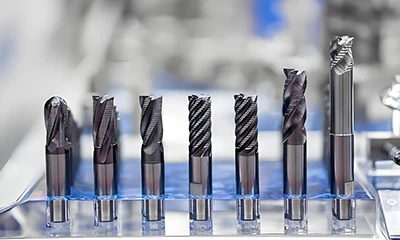
Knife material, Geometric parameters, Tool structure has an important influence on cutting performance, Correct choice of tools, Essential for improving dimensional stability in processing.
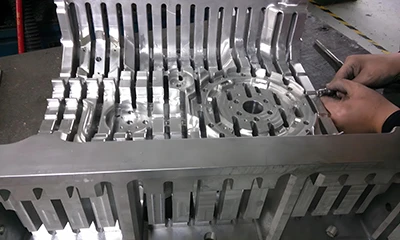
The CNC high-speed cutting process is generally: Rough machining – semi-finishing – corner cleaning – finishing and other processes. For parts with high precision requirements, Need to increase the number of semi-finishing operations, and retain a uniform machining allowance.
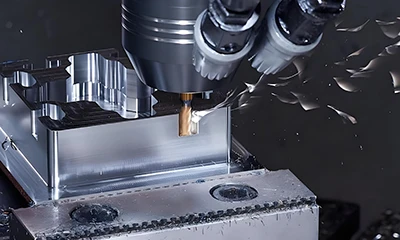
Choose the right feed rate, Spindle speed and depth of cut;
Use symmetrical processing method for the front and back sides of the workpiece, Avoid centralized processing which is not conducive to heat dissipation.
הימנע מקירות דקים
זהה לתכונות גבוהות, הרטט מתגבר בעת עיבוד תכונות דקות. בתור מדריך, העובי המינימלי של חלקי מתכת עם דופן דקה הוא 0.5-0.8 מ"מ, העובי המינימלי של חלקי פלסטיק הוא 1.0-1.5 מ"מ. אם הקיר משמש לתכונות תומכות או גבוהות יותר, יש להגדיל את עובי הדופן, כדי למנוע רטט במהלך העיבוד.
הימנע מטקסט קטן או מוגבה
ייתכן שיהיה עליך לסמן את החלק עם מספר החלק או שם החברה, הוספת טקסט נראית מגניבה, אבל העיבוד מאוד גוזל זמן, בדרך כלל עדיף תחריט אלקטרוכימי או חריטת לייזר. אם אתה חייב לטחון טקסט, בחר טקסט שקוע במקום מוגבה במידת האפשר, שמור על זה פשוט עם טקסט גדול יותר, עומק הגופן אינו עולה על 0.3 מ"מ.
הקפידו על תקני חוט
בעת יצירת שרשורים, חשוב גם להקפיד על מידות סטנדרטיות. ככל שהחוט גדול יותר, כך קל יותר לעבד אותו. יש לשמור על האורך עד למקסימום הקוטר הנומינלי של החור 3 פִּי. עבור הקשה על חור עיוור, עדיף להוסיף לפחות בשורש החור 1/2 אורך צמצם נוסף. אתה יכול גם לשקול להשתמש בתוספות, סלילים עם הברגה ואומי נחושת מחזיקים מעמד זמן רב יותר מחוטים מעובדים חשופים, במיוחד בחומרים כמו אלומיניום או פלסטיק, וקל להתקנה.
הזווית הפנימית הגדולה ביותר האפשרית
כל חתך פנימי ייצור פילה, זה חצי מקוטר הכלי המשמש. כרסום עם כלים קטנים יותר לוקח זמן רב, אנו ממליצים שהרדיוס יהיה גדול יותר מעומק העיבוד 1/3. הגישה הטובה ביותר היא לבטל פינות פנים או לאפשר את רדיוס הפינות הפנימי הגדול ביותר האפשרי בעיצוב החלק ההזדווג, והשתמש באותו רדיוס בכל הקצוות הפנימיים, כך שניתן יהיה להשתמש באותו כלי לאורך כל התהליך.
הימנע מחללים עמוקים מדי、חריצים וחורים עמוקים
עומק הכיס והחריץ קשור בדרך כלל לקוטר הכלי המשמש לעיבוד הפילה הפנימי. כלל אצבע טוב הוא לשמור על עומק הכיס שווה לקוטר הכלי 3-4 פִּי, או שעומק החריץ קטן מרוחב התכונה 4 פִּי. בין אם חור עיוור או חור דרך, העומק המרבי המומלץ הוא קוטר 4 פִּי, הצמצם המינימלי הוא 1 מ"מ, ומומלץ לעצב חורים בגודל סטנדרטי. השתמש במקדחה רגילה, יכול לעבד חורים במהירות ובדיוק גבוה; עבור חורים לא סטנדרטיים, שימוש בטחנות קצה מגדיל עלויות.
בין אם אתה צריך מספר קטן של חלקים או 10000 אובייקטי ייצור מרובים שבסופו של דבר נכנסים לשימוש, עיבוד CNC הוא שיטת ייצור אידיאלית. להלן שירותי CNC המותאמים אישית שאנו משיקים.
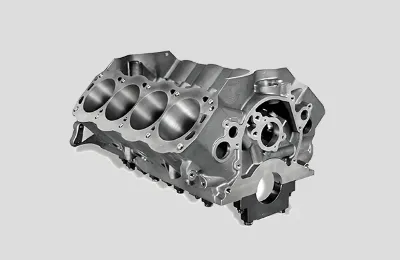
מאת Rapidefficient, אתה יכול להשלים את ייצור המוצר תוך זמן קצר, כדי להיות מסוגל להיכנס במהירות לשוק.
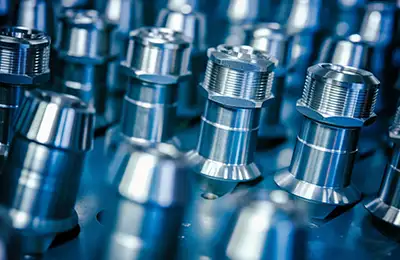
ייצור תבניות יעיל היא דרך חסכונית, מסוגל לגשר על הפער בין ייצור מדגם לייצור המוני. תן במהירות למוצרים שלך לכבוש את השוק.
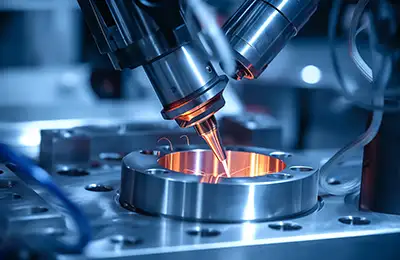
לפרויקטים מותאמים אישית, הצוות המקצועי שלנו יעזור לכם להשיג את המוצרים הטובים ביותר מבחינת איכות ויעילות.
כל המידע והחומרים המועלים מאובטחים וסודיים
אנו מספקים למפתחי מוצרים חדשים חלקים מעובדים מחומרים ברמה הנדסית המתאימים לבדיקות פונקציונליות או ליישומים לשימוש קצה. קבל את התמיכה בעיבוד שבבי CNC שאתה צריך על ידי קריאת השאלות הנפוצות.
1: Dimensional deviation
1. Check programming: Carefully check the coordinate values in the machining program, Tool compensation and other settings, Make sure it’s accurate.
2. Replace tools regularly: According to the wear condition of the tool, Replace tools regularly, Ensure the stability of processing dimensions.
3. Optimized clamping method: Use reasonable clamping methods, Reduce the impact of clamping force on the workpiece, Avoid workpiece deformation.
4. Regular maintenance of machine tools: Regularly perform accuracy testing and maintenance on machine tools, Ensure the positioning accuracy and repeatability of machine tools.
2: Surface roughness is unqualified
1. Choose the right tool: According to the processing requirements of aluminum parts, Choose the right tool edge radius, חוֹמֶר, etc.
2. Optimize cutting parameters: Properly set cutting speed, Feed amount, Cutting depth and other parameters, to obtain good surface quality.
3. Reduce vibration: Take steps to reduce machine tool, Vibration of the tool or workpiece, Such as adjusting the accuracy of machine tools, Change tool, Optimize clamping methods, etc.
4. Control the material quality of aluminum parts: Choose good quality aluminum parts materials, Avoid impurities in materials that affect surface quality.
3: Tool wear is too fast
1. Optimize cutting parameters: Reduce cutting speed, Feed rate and other parameters, Reduce the cutting load on the tool.
2. Choose the right tool: According to the processing requirements and material properties of aluminum parts, Choose the right tool material and edge radius.
3. Enhance cooling: Ensure adequate cooling during cutting, Reduce tool temperature, Extend tool life.
4. Improve tool quality: Choose good quality knives, Ensure the sharpness and hardness of the cutting edge of the tool.
4: Workpiece deformation
1. Optimized clamping method: Use reasonable clamping methods, Reduce the impact of clamping force on the workpiece. Multi-point clamping can be used, Uniform clamping, וכו', Avoid excessive local stress on the workpiece.
2. Optimize cutting parameters: Reduce cutting forces, If the cutting depth is reduced, Feed amount, etc.,at the same time, Use the proper cutting sequence, Avoid cutting in weak areas of the workpiece.
3. Control processing temperature: Take steps to reduce the heat generated during cutting, Such as strengthening cooling, Use appropriate cutting parameters, etc.,Prevent workpieces from being affected by thermal deformation and processing accuracy.
4. Perform stress relief treatment: For some easily deformed aluminum parts, Can be stress relieved before processing, Such as annealing, Aging processing, וכו', Reduce the internal stress of the workpiece, Improve machining accuracy.
5: Low processing efficiency
1. Optimize programming: Properly plan tool paths, Reduce idle tool time. באותו זמן, According to machine tool performance and processing requirements, Optimize cutting parameters, Improve processing efficiency.
2. Improve machine tool performance: If the machine tool performance is insufficient, Consider upgrading machine tools, Increase machine power, Performance parameters such as rotation speed.
3. Choose efficient tools: Choose tools with good cutting performance, Such as high speed steel cutting tools, Carbide cutting tools, וכו', Improve processing efficiency.
4. Using multi-axis machining: For complex aluminum parts, Multi-axis machining center can be used for processing, Improve processing efficiency and accuracy.
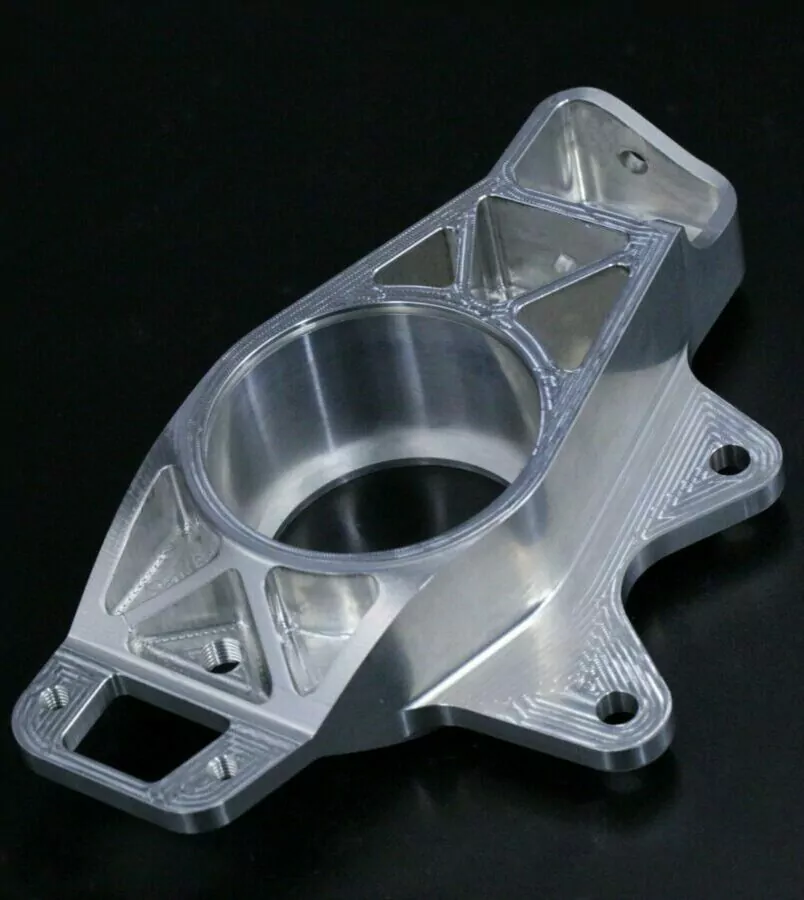
(1) High-precision processing
1. High dimensional accuracy: CNC (computer numerical control) machining technology enables very high dimensional accuracy, Tolerances can be controlled within a very small range, Generally can reach ±0.005 mm or even higher. This is critical for aluminum parts with stringent size requirements, Ability to ensure good fit between parts, Improve overall product performance and quality.
2. Good shape accuracy: Whether it’s a complex three-dimensional surface or a delicate geometric shape, CNC machining can be achieved accurately. לְדוּגמָה, For aerospace aluminum parts with complex contours, CNC machining can produce the exact shape you need, Ensure aerodynamic performance and structural strength of parts.
(2) High-efficiency production
1. High degree of automation: CNC machining equipment is controlled by a computer program, Able to realize automated processing, Greatly reduces manual operation time and labor intensity. לאחר הגדרת התוכנית, The machine tool can run continuously, for mass production, Improve production efficiency.
2. Multi-axis simultaneous processing: Modern CNC machining centers usually have multi-axis linkage capabilities, Can control the movement of multiple coordinate axes at the same time. This enables the machining of multiple faces of complex parts in one setup, Reduces processing steps and clamping times, Significantly improved processing efficiency.
(3) Strong flexibility
1. Adapt to different design needs: CNC machining can quickly adjust the machining program according to different design requirements, No need to make complicated molds. Whether it is single piece customization or small batch production, Can handle it easily. For new product development and trial production, CNC machining enables quick prototype production, Shorten product development cycle.
2. Processing of various aluminum materials: CNC machining is suitable for various types of aluminum alloy materials, Includes high-strength aluminum alloy, Corrosion-resistant aluminum alloy, וכו', Appropriate materials can be selected according to different application scenarios, Meet product performance requirements.
(4) Good surface quality
1. High smoothness: Through proper selection of tools and cutting parameters, CNC machining for good surface finish, Reduce subsequent surface treatment steps. For some aluminum products with higher appearance requirements, Such as electronic product casing, Automotive decorative parts, וכו', CNC machining delivers high-quality surfaces.
2. good consistency: in mass production, CNC machining ensures consistent surface quality of parts, Avoids quality fluctuations that may occur in manual processing. This is very important to improve the overall quality and reliability of the product.
(1) High equipment cost
1. initial investment: CNC machining equipment is expensive, Especially high-performance multi-axis machining centers, Requires large amounts of capital investment. For small businesses or start-ups, Purchasing and maintaining these devices can be financially stressful.
2. Technology updates quickly: With the continuous advancement of technology, The technology of CNC processing equipment is also constantly being updated. To stay competitive, Enterprises need to continuously invest funds in equipment upgrades and technological transformation, This increases the operating costs of the business.
(2) High programming technical requirements
1. complex programming: For complex aluminum parts machining, Need to write complex processing programs. This requires programmers to have a high technical level and rich experience, Familiar with CAD/CAM software and CNC programming knowledge. otherwise, May cause program errors, Affect processing quality and efficiency.
2. Process optimization is difficult: In order to take full advantage of CNC machining equipment, Processing technology needs to be optimized. This involves tool selection, Cutting parameter settings, Processing path planning and other aspects, Requires extensive testing and analysis. For some special aluminum materials or complex processing requirements, Process optimization is more difficult.
(3) Tools wear quickly
1. Aluminum material properties: Aluminum is a relatively soft material, אוּלָם, it is easy to cause knife sticking during the processing process. Causes tool wear to accelerate. גַם, Aluminum alloys may contain some hard particles, such as silicon, Iron etc., It will also increase tool wear.
2. High speed cutting requirements: CNC machining usually uses high-speed cutting technology, To improve processing efficiency and surface quality. אוּלָם, high-speed cutting will subject the tool to greater cutting forces and heat, Further accelerates tool wear. therefore, Requires selection of appropriate tool materials and coatings, and reasonable cutting parameters, To extend the service life of the tool.
(4) Pressure on environmental protection
1. Cutting fluid treatment: CNC aluminum machining often requires the use of cutting fluids to cool and lubricate the tools. אוּלָם, the use of cutting fluid will produce waste fluid, causing pollution to the environment. therefore, The need for effective treatment and recycling of cutting fluids, to reduce environmental impact.
2.Dust emission control: during processing, Will produce a lot of aluminum chips and dust. if not controlled, These dusts may pose a health hazard to operators, It will also cause pollution to the environment. therefore, Effective dust emission control measures are needed, Such as installing vacuum equipment, Use wet processing, etc.
שירותי עיבוד ה-CNC שלנו זכו לשבחים מלקוחות גלובליים מתחומים שונים. אנו מספקים רכיבי עיבוד CNC למגוון תעשיות, מכסה את הדברים הבאים ועוד.

חלקים בגודל גדול, כגון פגושי ABS בעיבוד CNC, לוחות מחשב/ABS וחלקי רכב מדויקים, רפלקטור למשל, עֲדָשָׁה, מכלול הגה, מָנוֹעַ, הפצה.

חלקי רובוט לתעשיית הרובוטיקה והאוטומציה, מַפעִיל, גורם קצה, מָנוֹעַ, ציוד בקרה אוטומטי, מתקנים וביתונים.
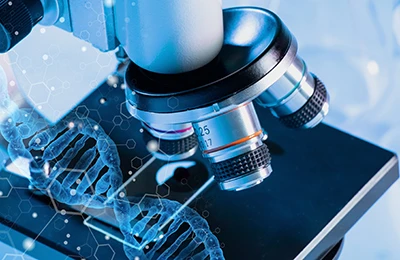
פלדת עצם מנירוסטה או טיטניום, תוֹתֶבֶת, ציוד נשימה, מכשיר כף יד, ציוד אבחון, מודל אנטומי, רכיבים לצרכים רפואיים כגון מכשירים כירורגיים.

מנוע אירו, גוּף, טוּרבִּינָה, בֶּלֶם, חלקי צמיגים, מערכת תאורה, חלקי משאבת ואקום ומשאבת דלק.

מוצרי צריכה, כגון מארזי ציוד אלקטרוני, לַחְצָן, יָדִית, כַּפתוֹר, מֶתֶג, מכשירים דיגיטליים לבישים, מוצרי בישול, ציוד ספורט.
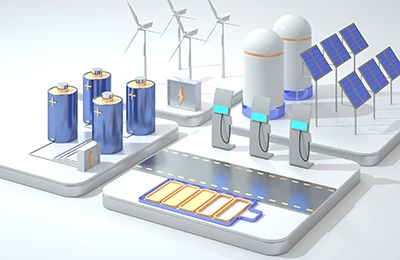
רכיבים חדשים בתעשיית האנרגיה, לְמָשָׁל. מחליף חום, שַׁסתוֹם, צינור, משאבות ואביזרים, רכיבים הידראוליים, רכיבי סוללה, רכיבי פאנל סולארי, מסגרת ואימפלר.
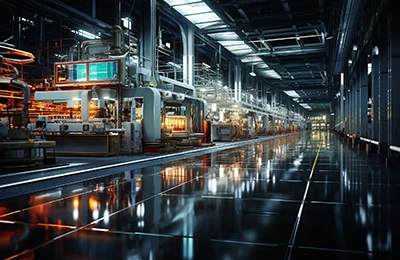
דיור אלקטרוני, מסוע, אֶטֶב, מַחבֵּר, רכיבי גנרטור, מתקנים, חלקי מכונות וכלי עבודה למכונות תעשייתיות.
ניתן ליצור מודלים בפועל בהתבסס על דרישות מוליכים למחצה, מודלים הנדסיים וציוד ניסיוני אחר, אנו עובדים עם אוניברסיטאות ברחבי העולם.

